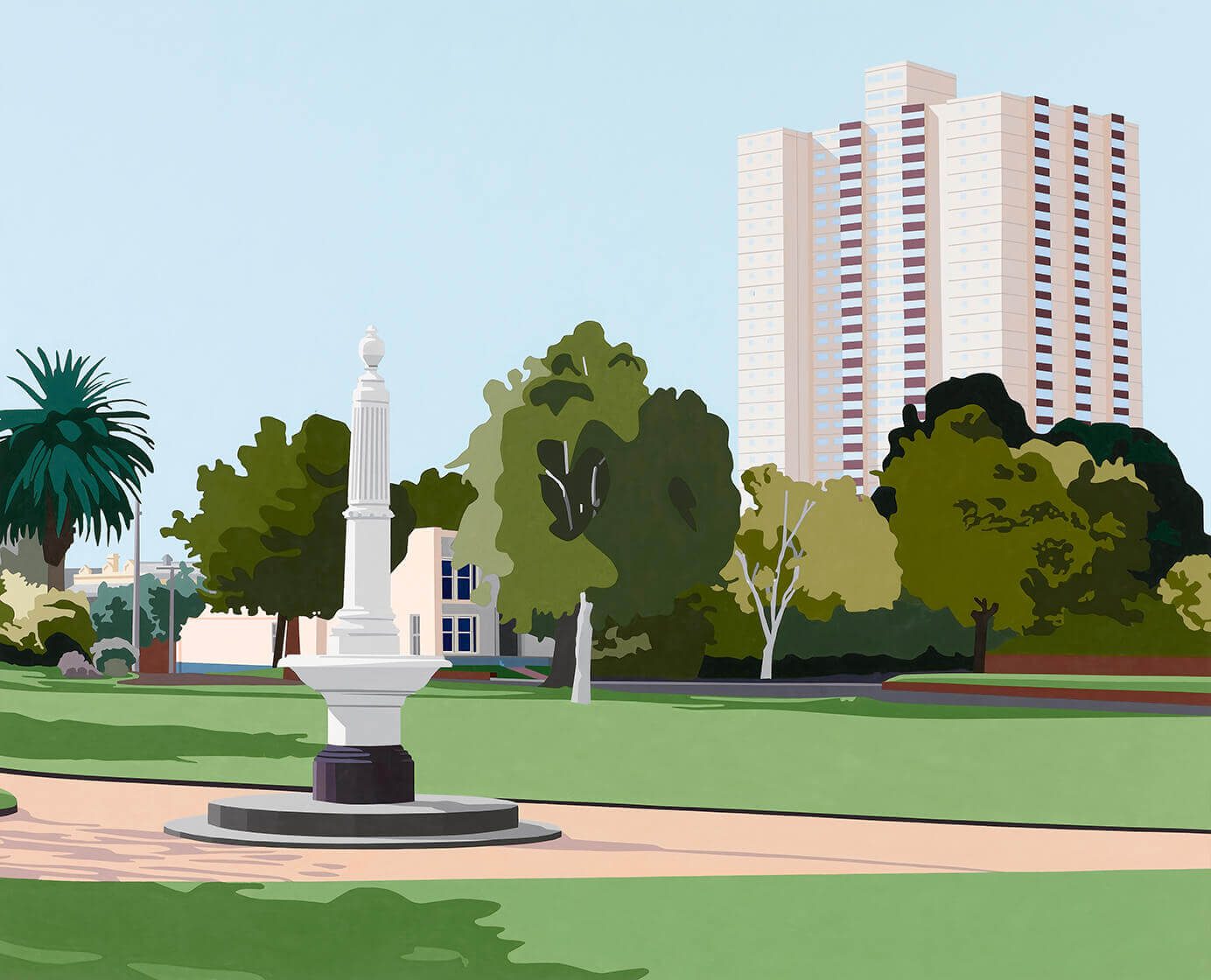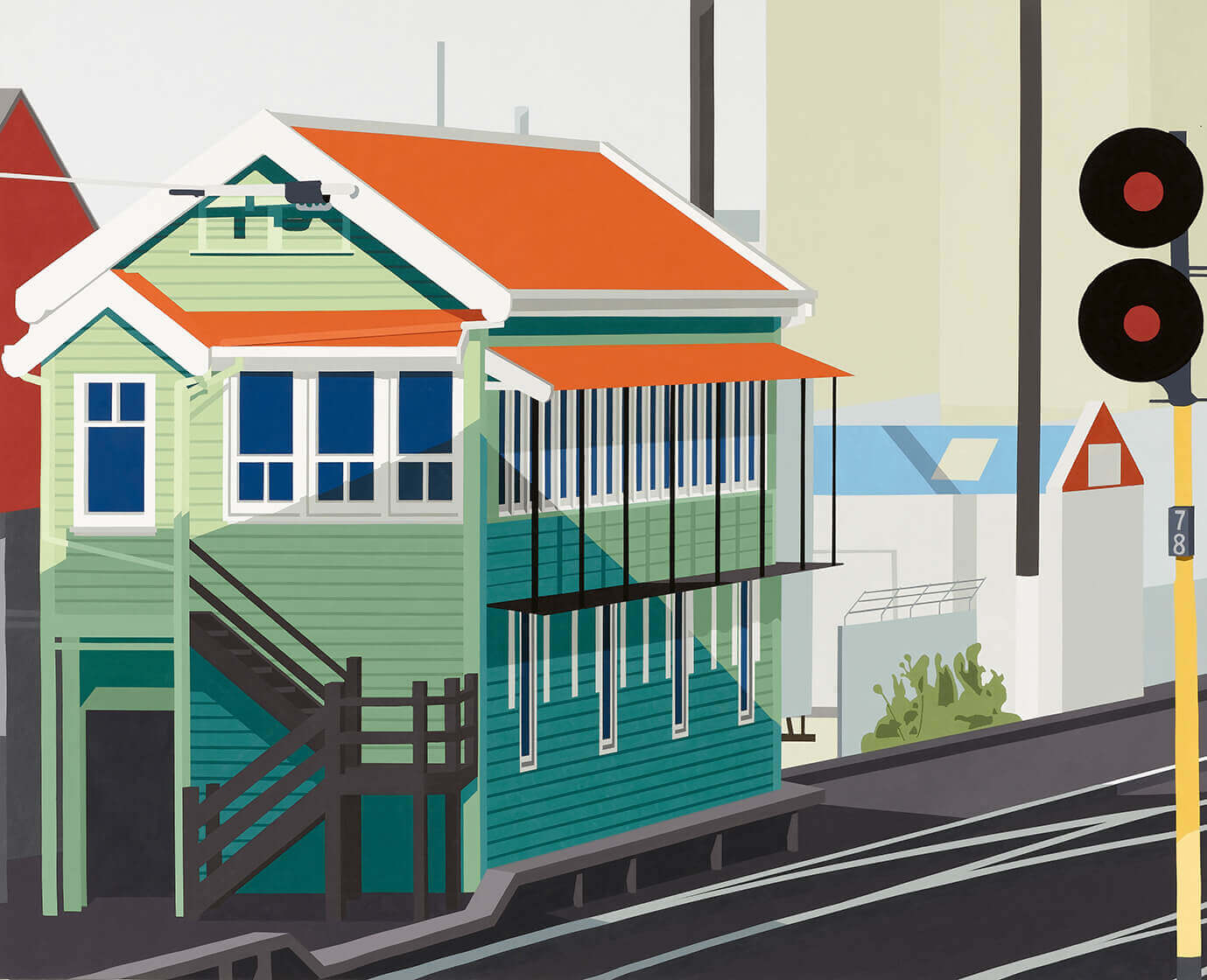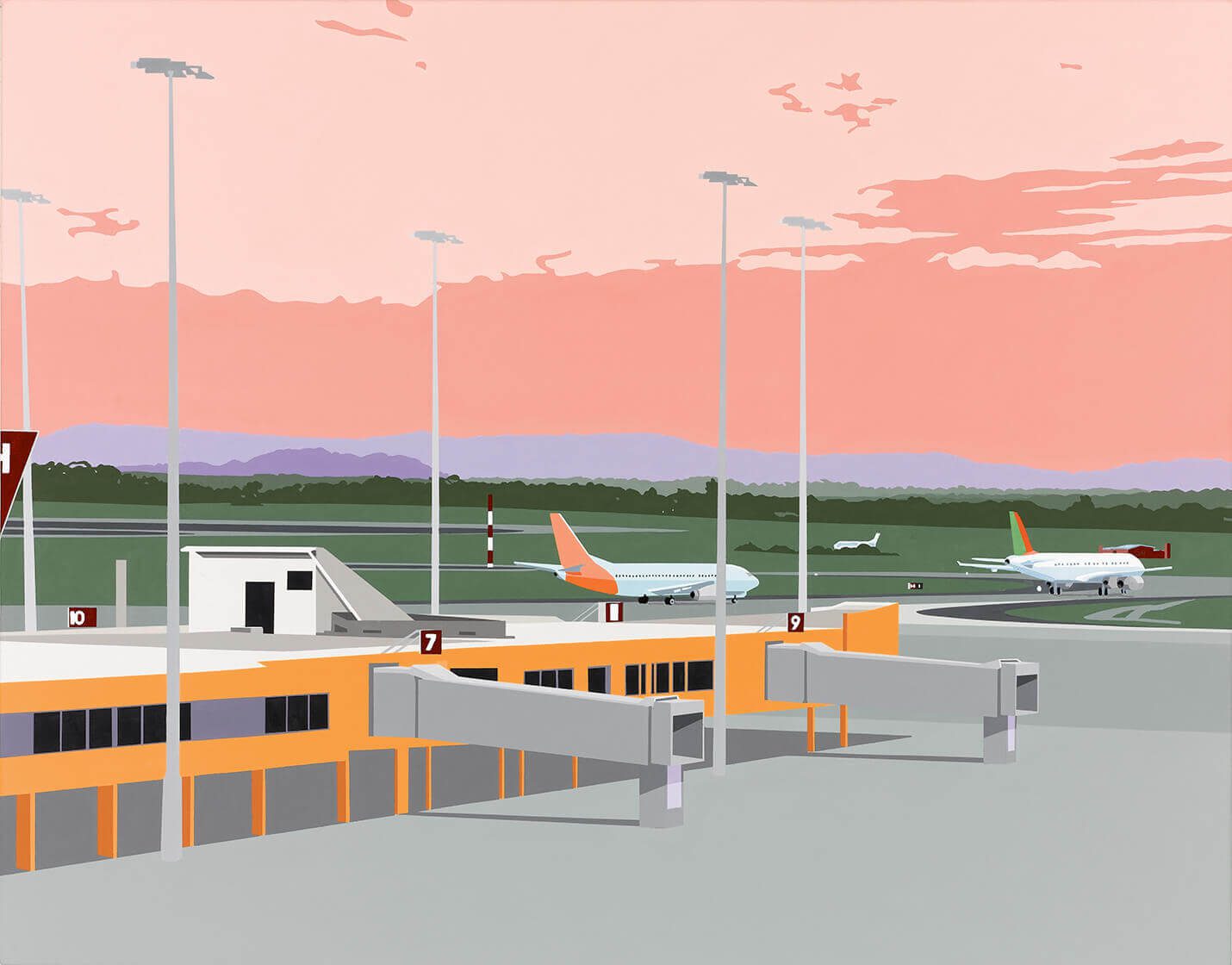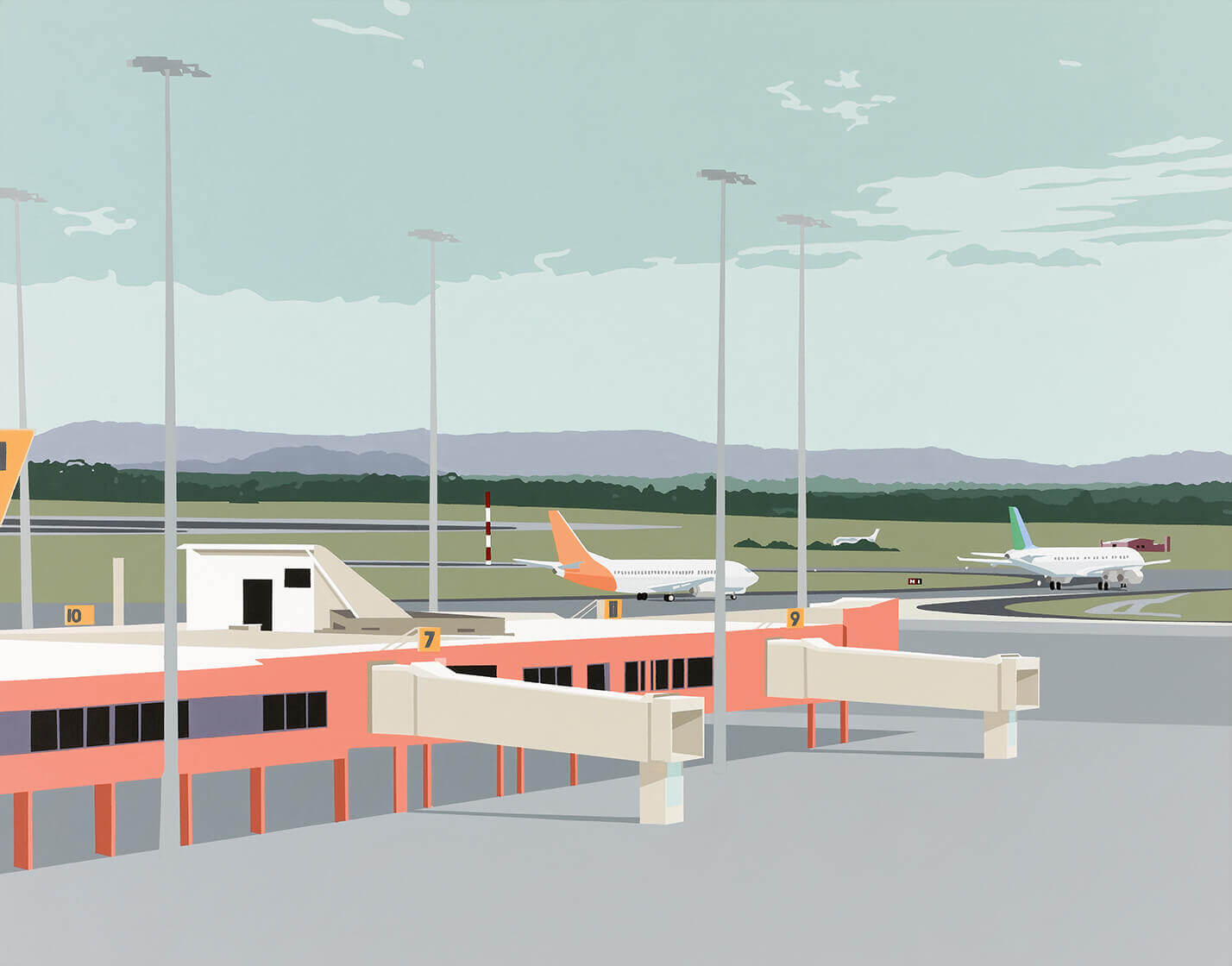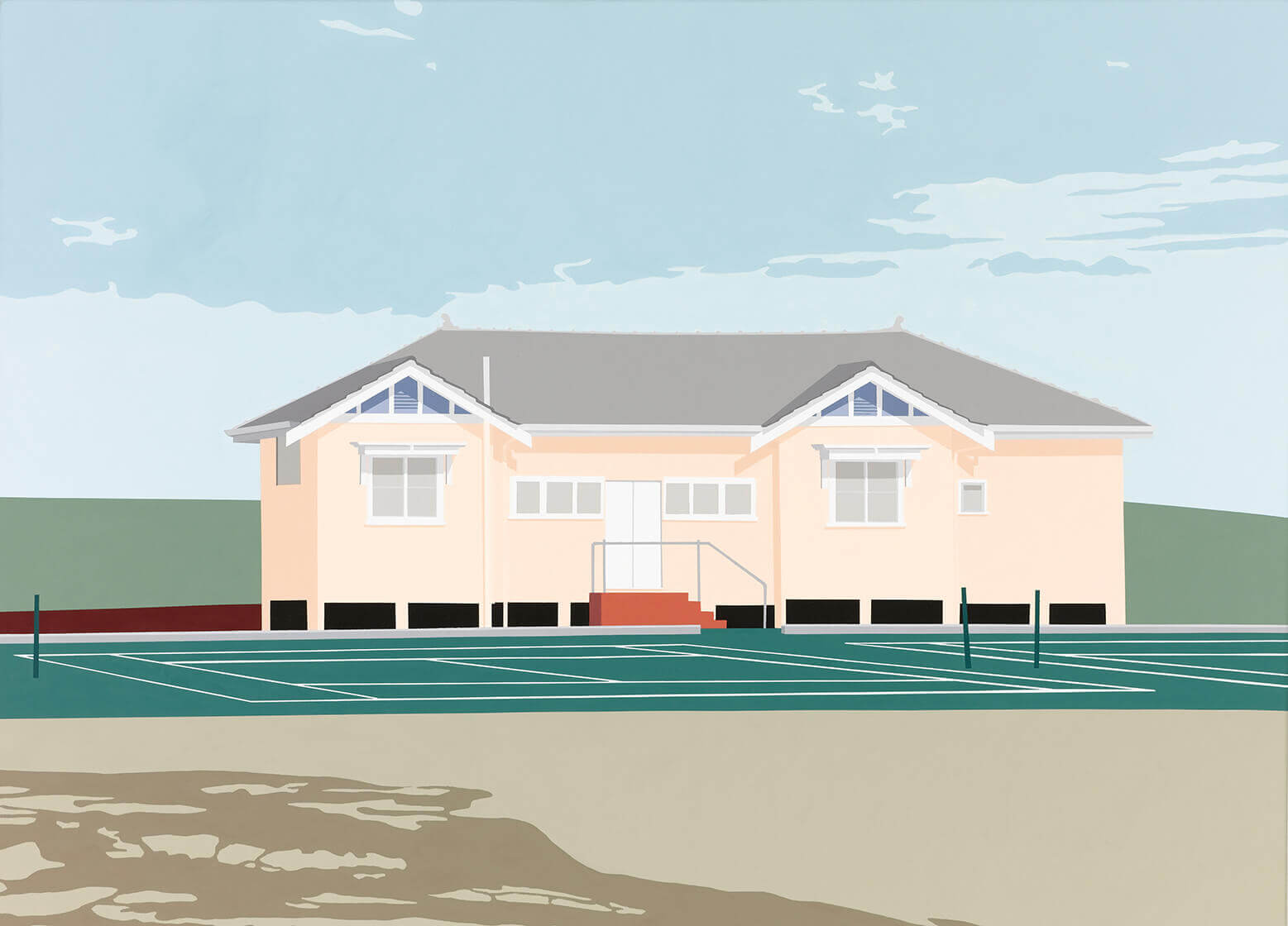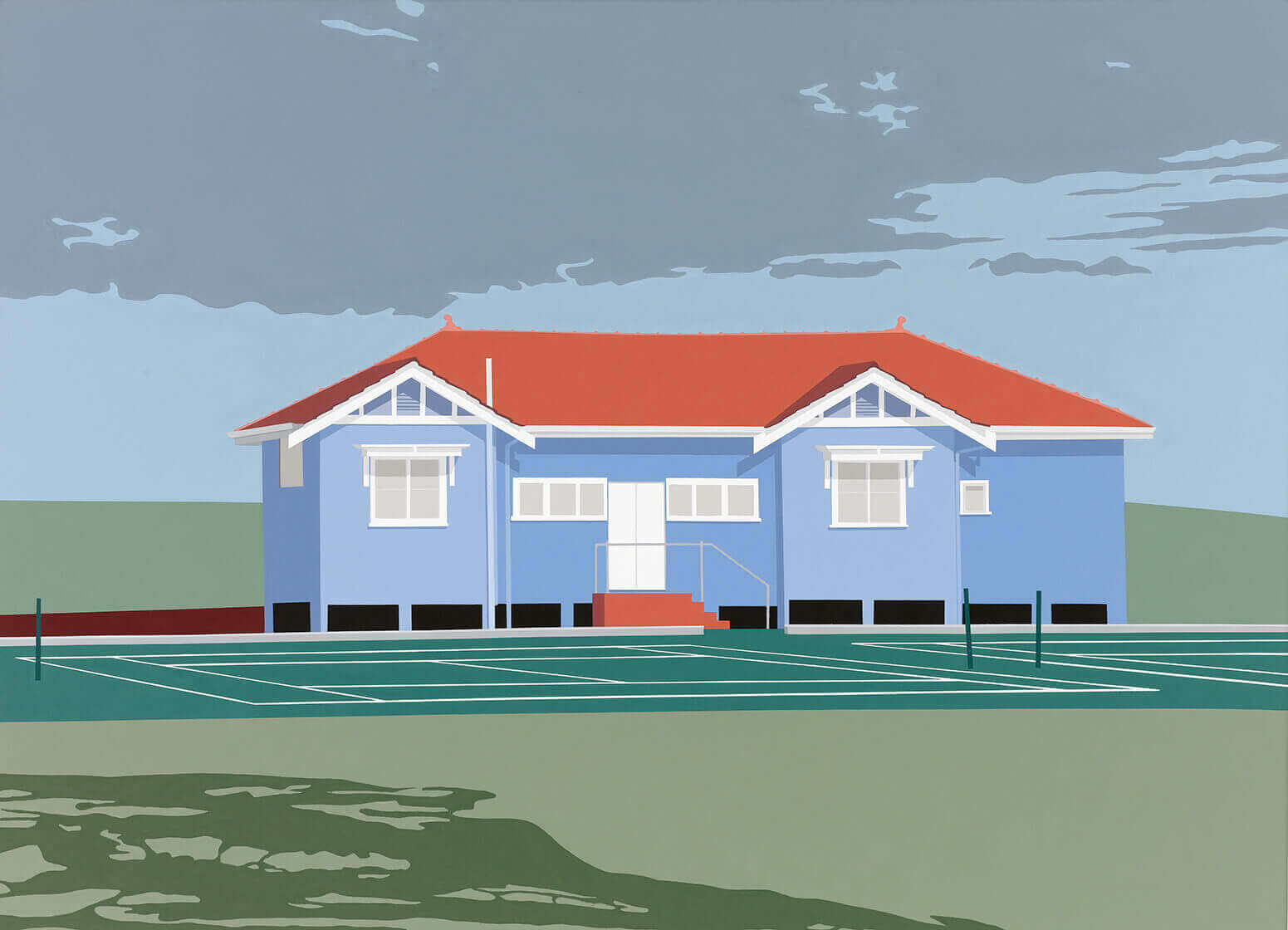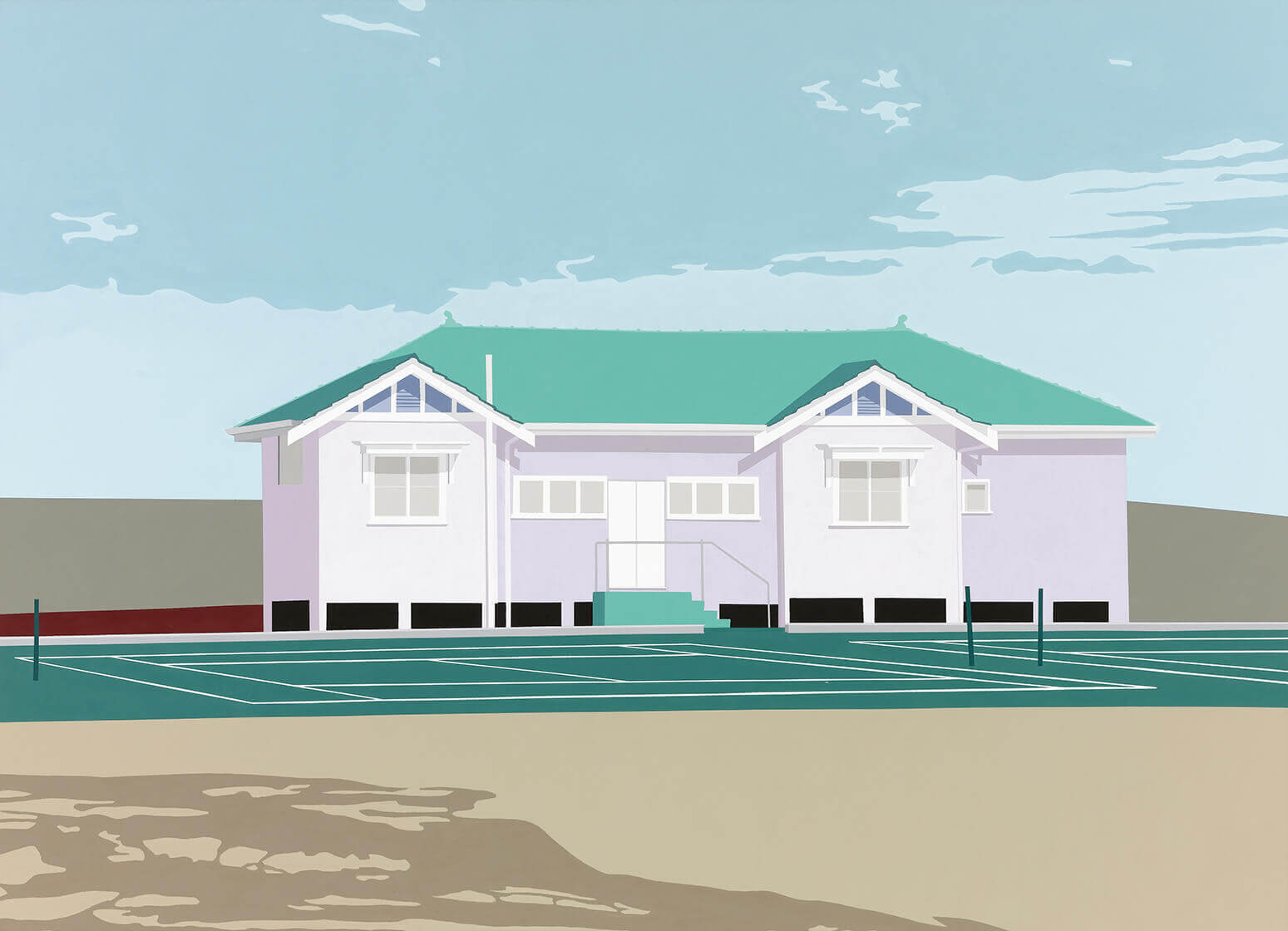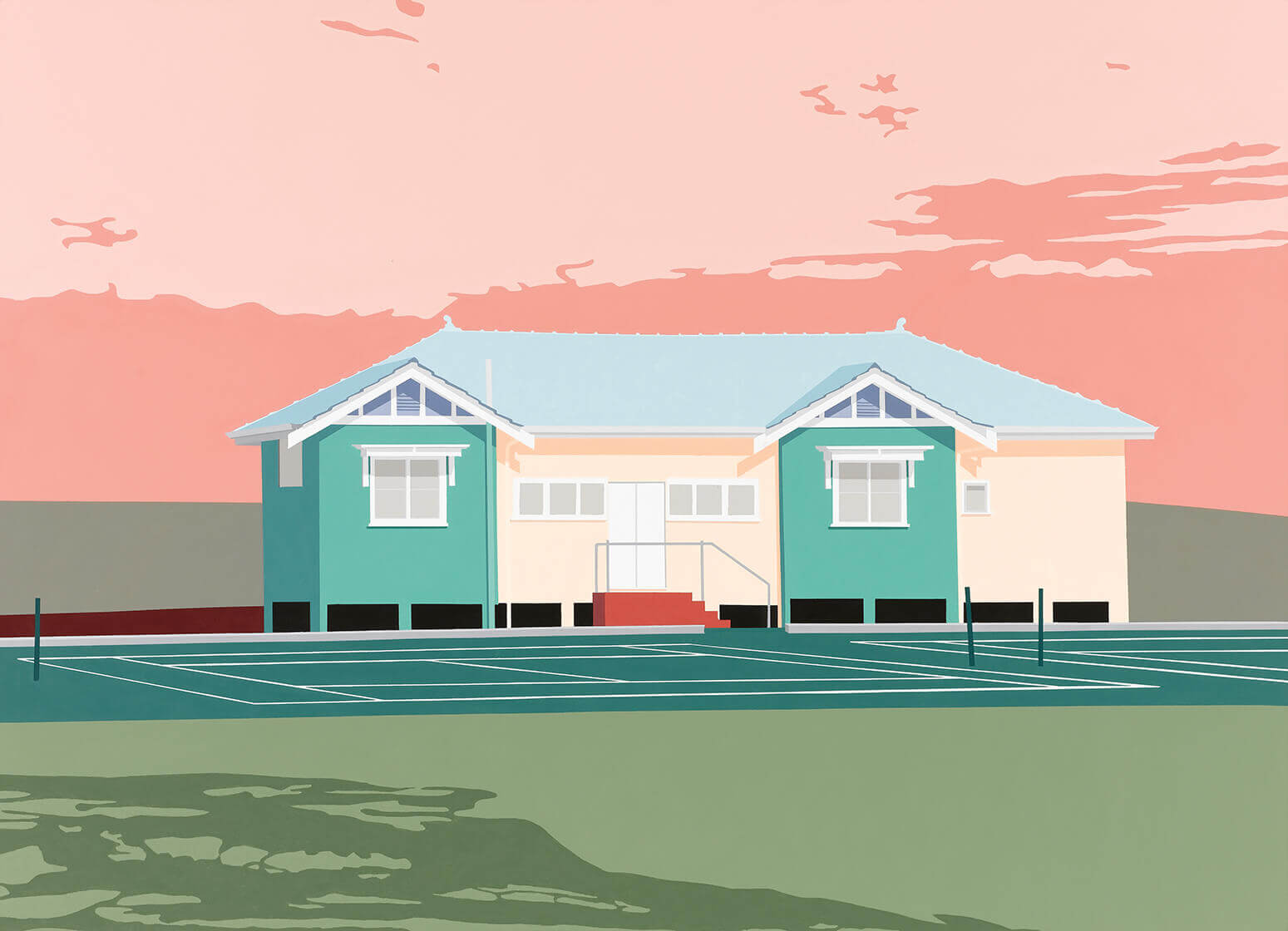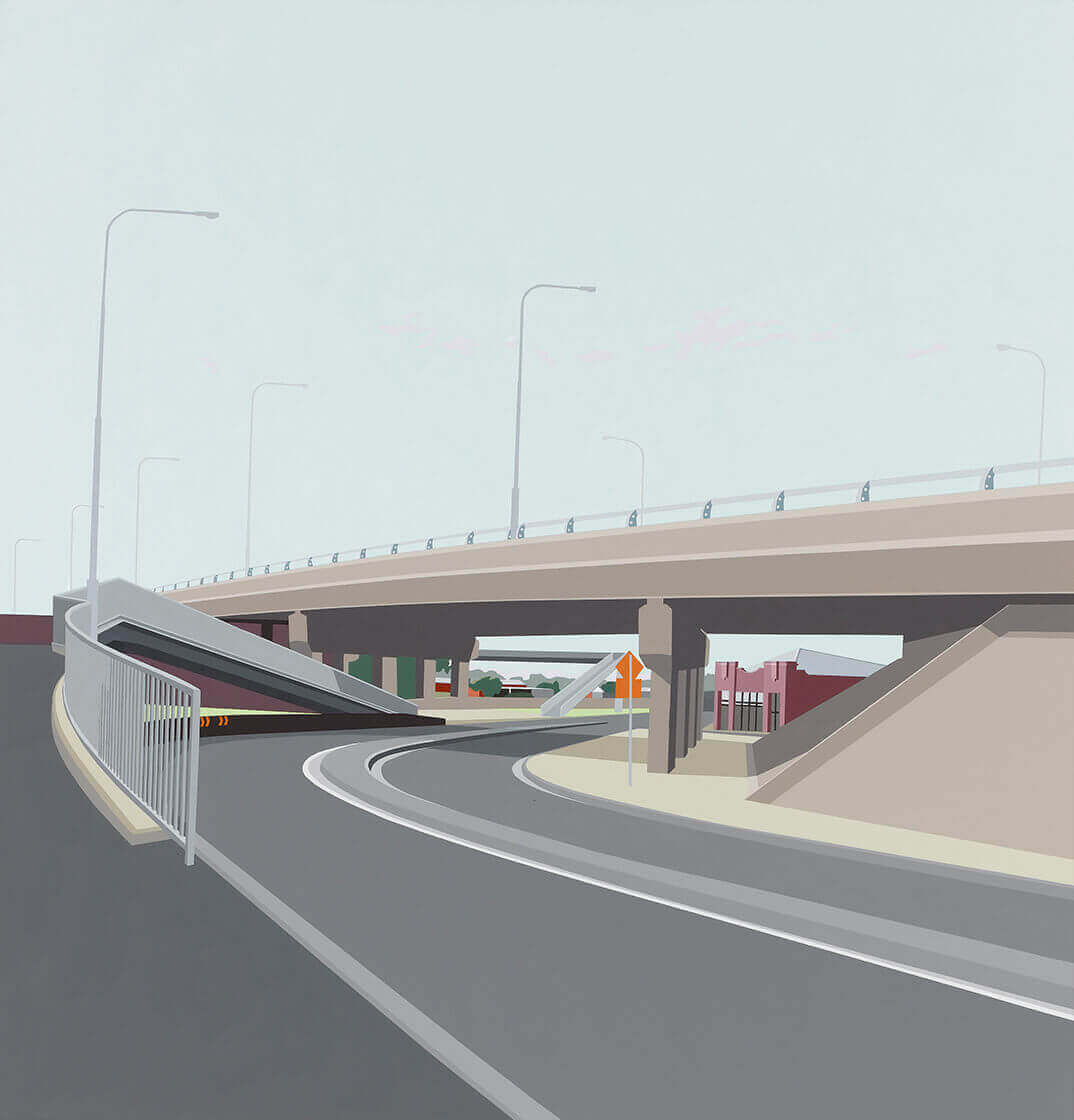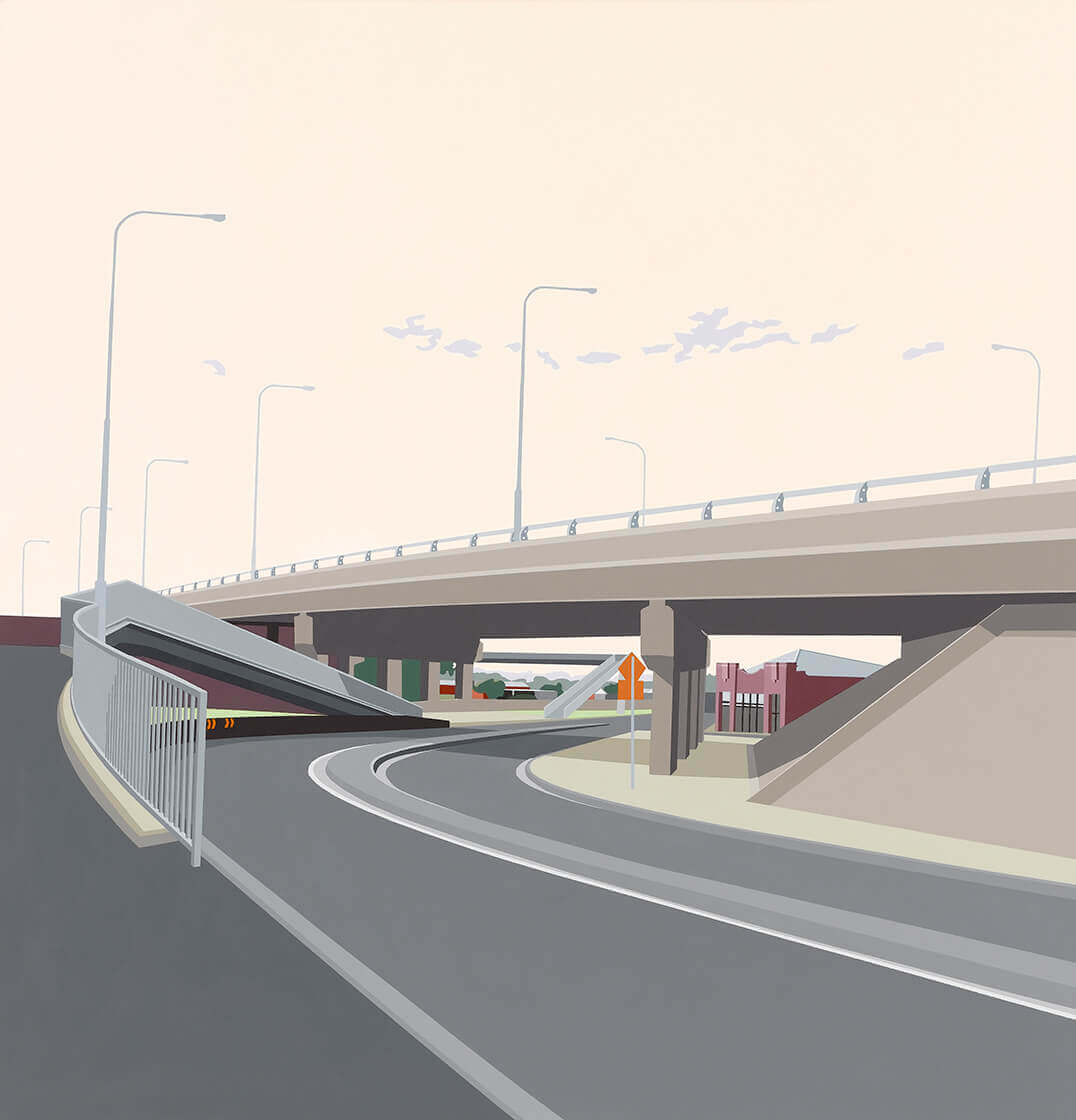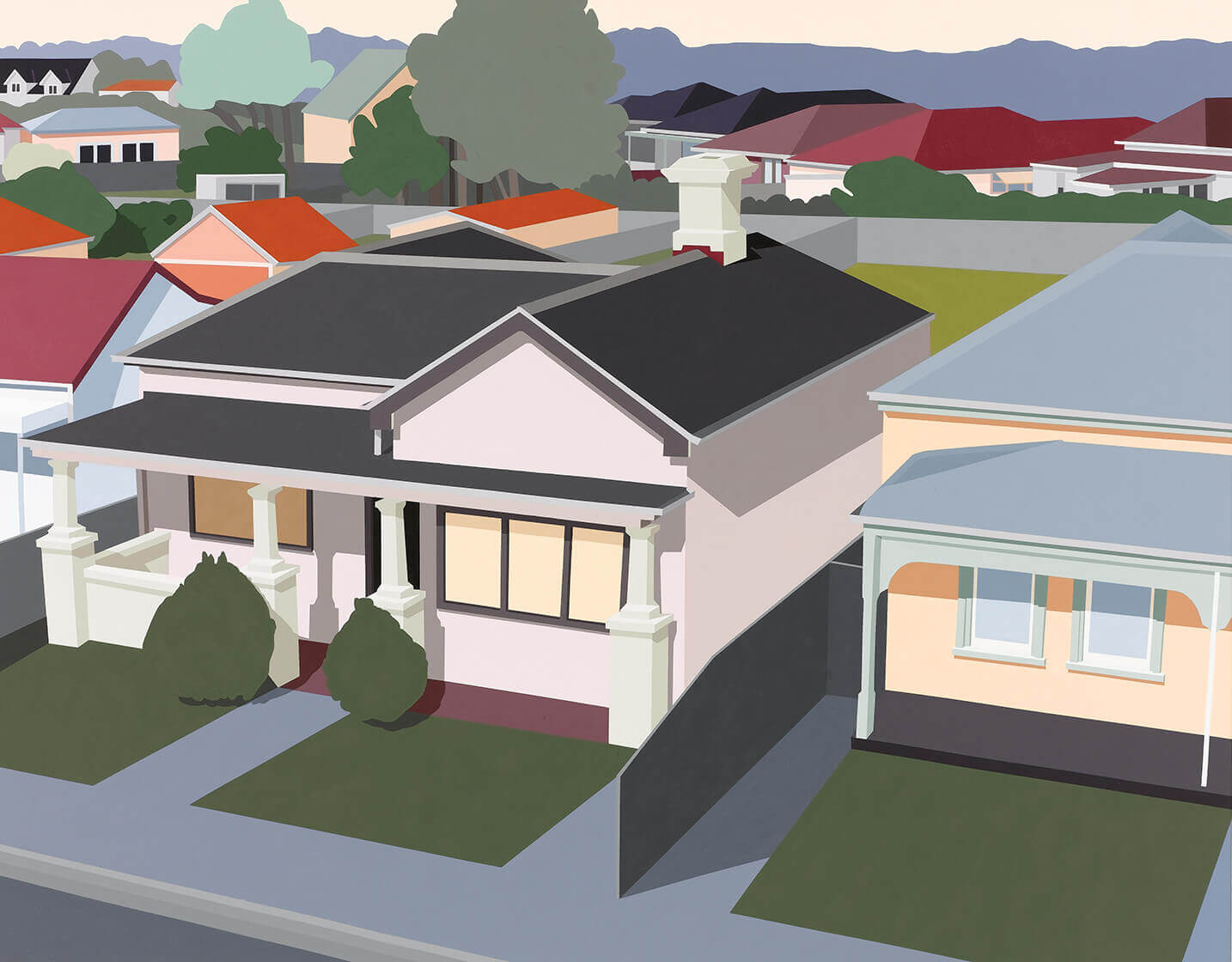Flatland November–December 2006, Johnston Gallery
Wallpaper for the New World Order
Robert Cook, October 2006
These days landscape is nothing more than a kind of wallpaper. Safely cocooned within the comforts of our glimmering modernity, it’s just there, making no real demands on the senses – flat, textureless, bland and unobtrusive. Drained of its urgency within those sleepily nostalgic nationalist debates and yearnings, the fact is it has become what it always was – an illusion, a construction in retrospect, a passive backdrop to whatever set of ideologies are daubed over it. Little wonder that after the degradations inherent in such processes, Joanna Lamb comes to it and finds it, somehow, empty.
While that’s the general phenomenon her work is located within, Lamb is also responding to the world after a childhood, adolescence and early adulthood living, mostly, in Perth. For her, as for so many of us non-indigenous locals aware of the wrenches of the primal and ongoing colonial scene, the principal feature of living in this place is an unsettling sense of living in an illusion itself, cut off from the world, drifting through life, not participating. The broad emptying aesthetisations of landscape discourse have arguably infected all areas of life here. Possibly, this is a by-product of colonialism and modernity’s efforts to render the place passive to our ordering visions. Seeing it as a non-descript non-place, therefore, feels just right, a reflection of the worst of our history. After all, something is always lost when power is the facilitator of even the most decorous of visions.
In terms of the feeling-tone created by this it seems that Perth shares, historically, much with Los Angeles. As Joan Didion wrote in her 1975 essay ‘Pacific Distances’:
“A good part of any day in Los Angeles is spent driving, alone, through streets devoid of meaning to the driver, which is one reason the place exhilarates some people, and floods others with an amorphous unease. There is about these hours spent in transit a seductive unconnectedness. Conventional information is missing. Context clues are missing….Such tranced hours are, for many people who live in LA, the dead centre of being there, but there is nothing in them to encourage the normal impulse toward ‘recognition’, or narrative or connection. Those glosses on the human comedy (the widow’s heart break, the bad cop, the mother-and child reunion) that lend dramatic structure to the more traditional forms of urban life are hard to come by here….[1]”
Now that seems to sum up Perth perfectly. There is something trancelike about the place, even if one doesn’t buy into the whole tediously articulated “dullsville” scenario. What is important to grasp, though, is that there is something special about this; tranced tonelessness is a real feature, a strong one. Instead of ignoring it, instead of wishing it away, Lamb is intent on exploring and revealing its nuances – much like Didion was in her own place and time.
As these dynamics are the outcome of accumulated cultural mediations, it is only natural that Lamb’s works also evolve through a slow process of mediation. Each painting begins as a drawing or photo that is then rendered onto the computer where surplus details from the original scene are gradually culled. What are left are blocks, forms and colours that appear realistic, yet are really the well-worn signs of realism. These are then modulated into various tonal variations. A screen-printing process is used to make the outlines on the canvas and then the acrylic paint is applied. It is an instance of manufacture in miniature, the opposite of urgently jumpy en plein-air impressionism. Instead, Lamb’s works are models of hyper-conscious, distanced reflection. As such, their super neat finish seems elusively accomplished, having a clean, precise, almost mechanically de-humanised feel. Coolly Warholian in nature, they suggest that the scenes they depict are completely interchangeable.
Lamb’s aesthetic flattening in this regard is a key part of the graphic that signifies the global; the smoothing out of details is situated within the bland same-making that argues for pure command over space. In other words, space is tamed through its artificial abstraction that implies it is easily moved over, without the traction of place. Auge writes:
“…we can only be sensitive to certain striking characteristics of contemporary space: the secret relationship (giving rise to aesthetic translations) between the spaces of movement, communication and consumption which, irrespective of whether they conceal or reaffirm each other, are surrounded by aesthetic forms which resemble each other (train stations look like airports look like hypermarkets, etc.). These spaces reflect a new form of world organisation, a planetary system which is seeking a style, turning towards a new division of labour and striving to regulate both political divisions and migratory flows. [2]”
As if illustrating this very concept, Lamb’s airport series appear as if the non-place of the airport has seeped out over the surrounding landscape itself. Both are generic, non-specific; both are envisaged as part of the new global anonymity. They are scenes of arrival and departure, not places for living.
The visual sphere Lamb presents, therefore, offers a codified layering that perfectly matches the new world order of endlessly interchangeable non-places. In this, Lamb is neatly commenting on the fact that, since colonisation, this place has always, at least partly, been an “international fantasy”. It has been seen through “other eyes” that have found it so very difficult to see the reality and the quiet, subtle possibilities of what actually exists here. In doing this, Lamb casts the discourse of landscape as it is traditionally known as an entity that, in attempting to represent the experience we have of a place, of the world, actually represents a non-experience; landscape can be obfuscatory as much as revelatory.
It’s important to note, then, that Lamb’s Melbourne scenes are constructed in a similar fashion. Like those of Perth, their close tonal pictorial harmonics present spaces that feel like mirages, always on the verge of falling out of view. The accumulated experience of these paintings as group, therefore, kick-starts the process of coming to grips with an entire world increasingly composed of narratives of globalisation and corporate branding and same-making.
In a way, that’s why getting a handle on how these discrepancies are lived and encountered is so key to coming to terms with the creative possibilities of life. As they open this up, Lamb’s works neither offer empty celebrations of the achievements of modernity, nor the boringly damning critiques of the place that the “dullsville” folk proffer. Instead, they approach a deeper reality, offering a flattened ground upon which to re-think the textured substance of life in a mirage, in a hall of mirrors that is continuingly changing, continually sucked into and out of an internationalising orbit.
As such, they’re complexly intellectual wallpaper for a new world order to come, maybe…maybe…
Notes
[1] Didion, Joan. (1975). “Pacific distances”, in Live and learn (2005). Harper Perennial: London, p. 437.
[2] Auge, Marc. (2001). “Non-places and public space”, in Quaderns: d’arquitecturea i urbanisme: in transit, vol 231. p. 15.
